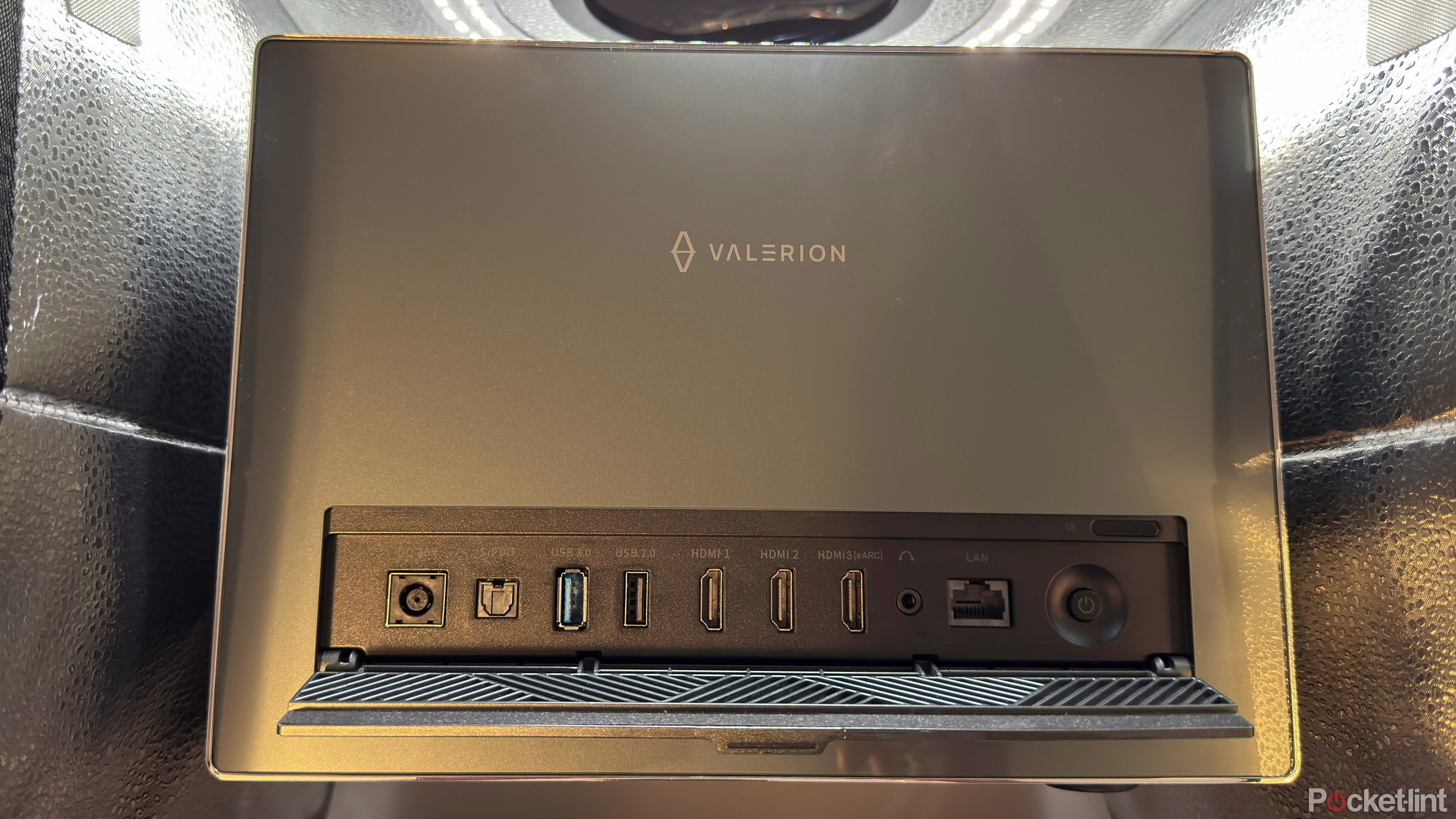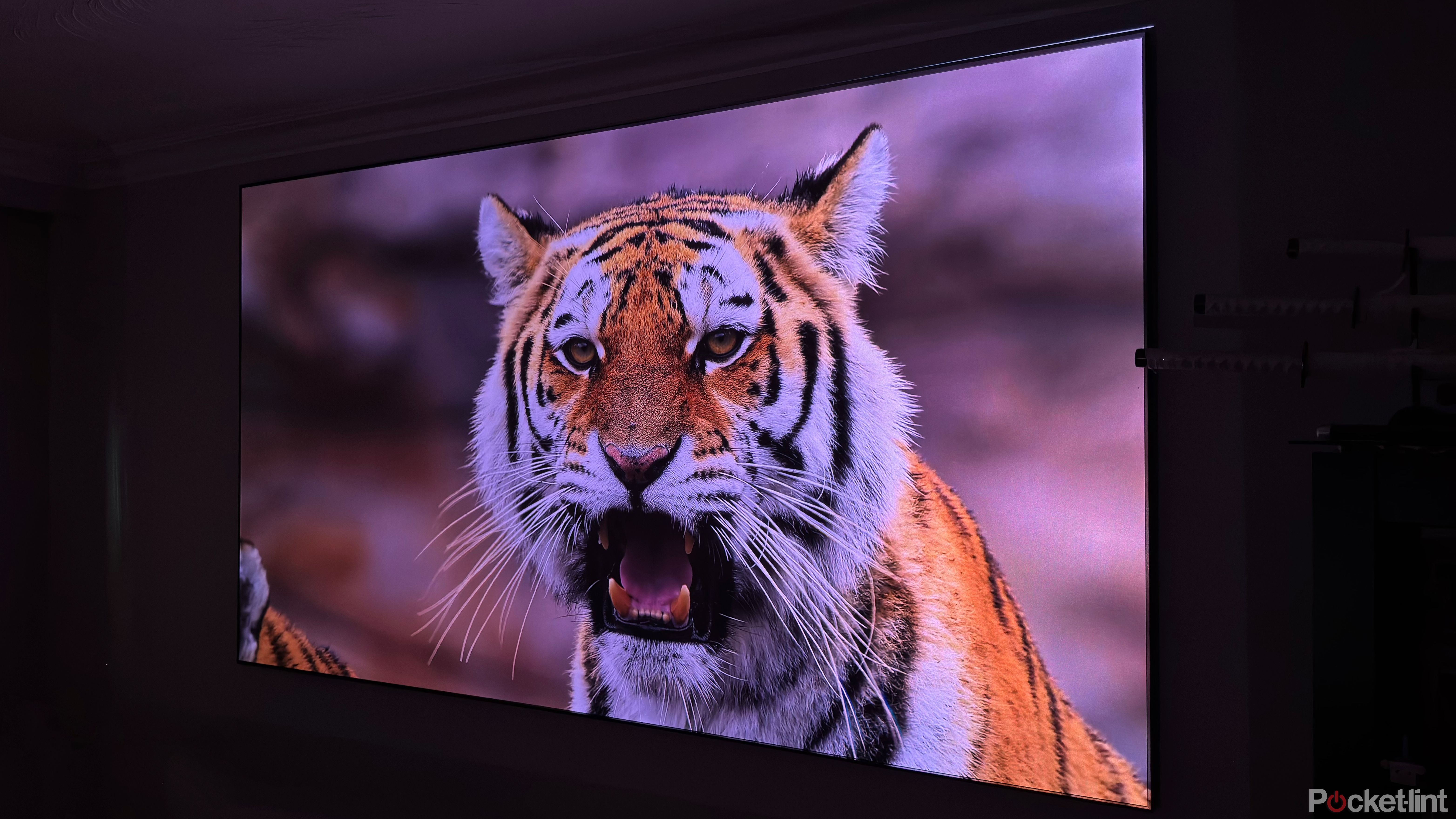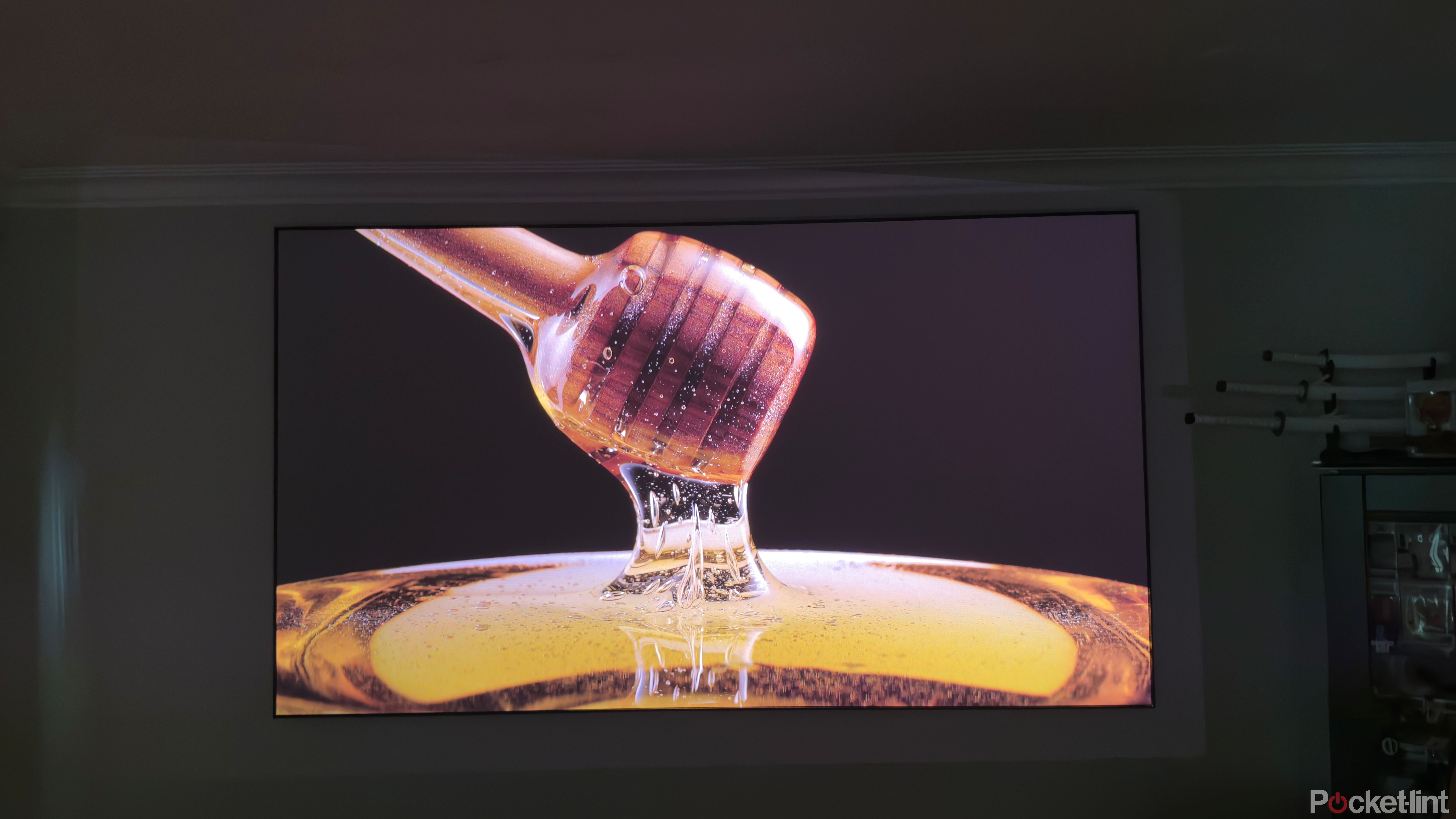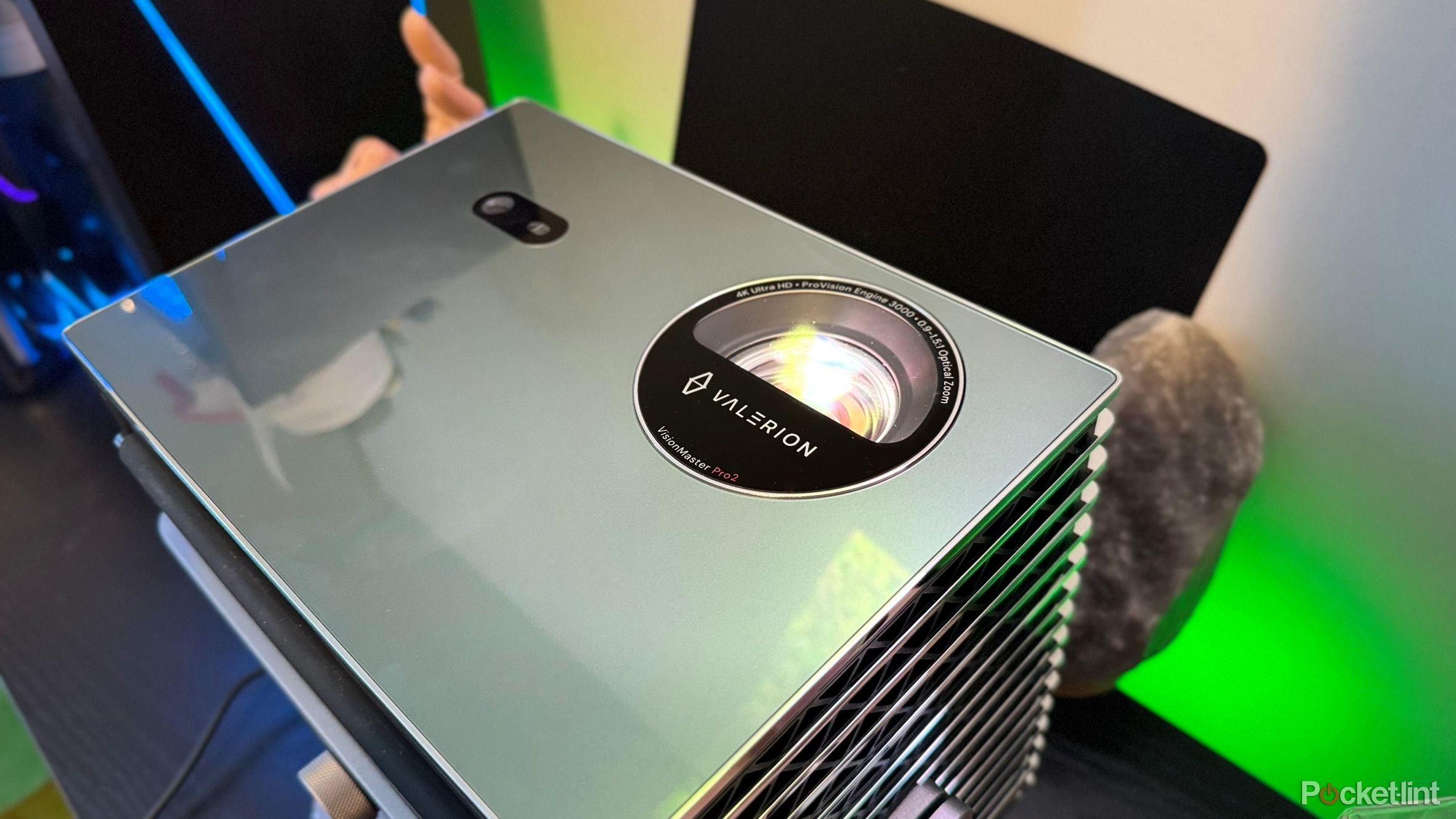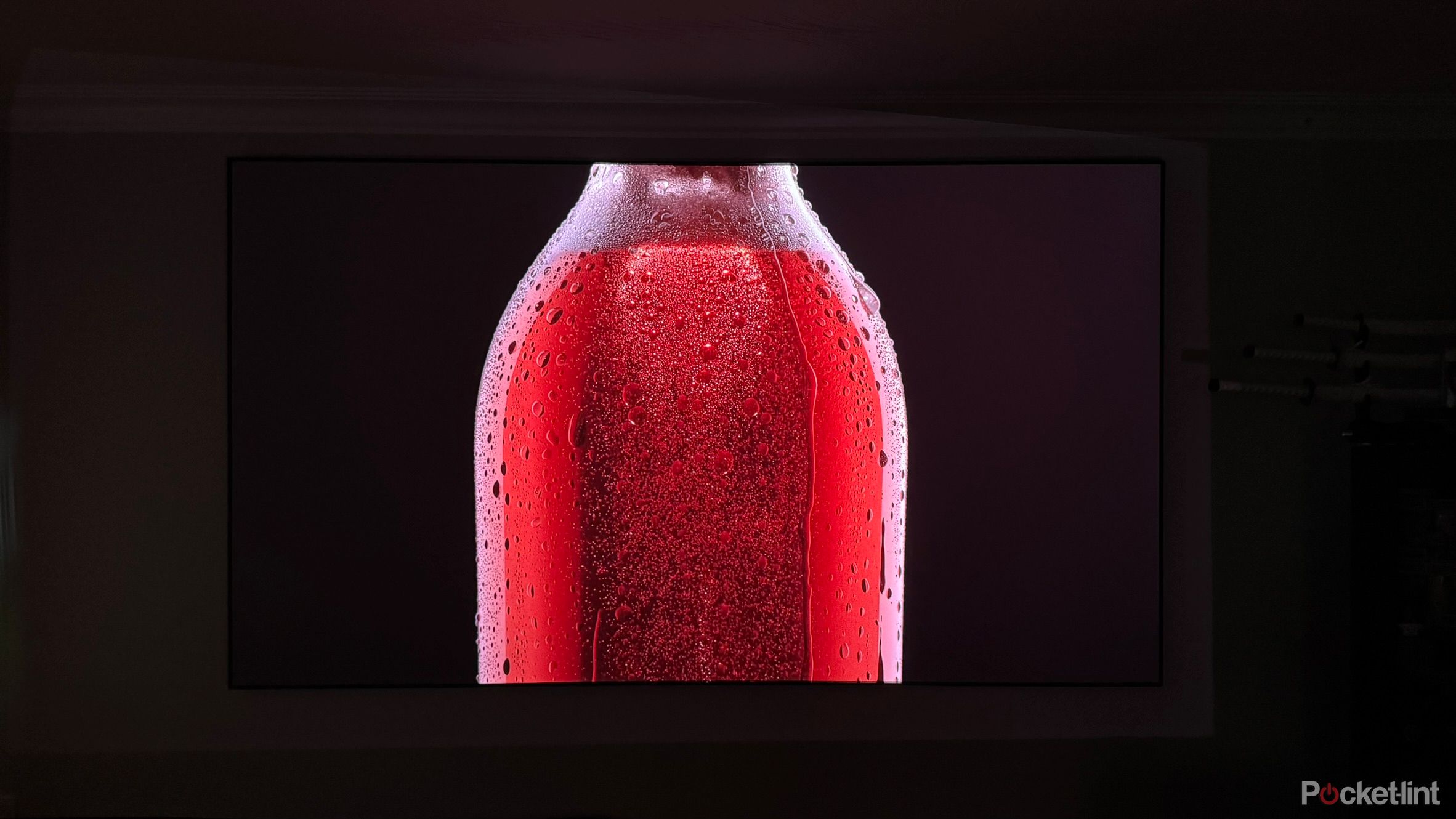Summary
- Valerion VisionMaster Pro 2 disrupts high-end projector market with premium features and design
- Despite price tag of $3,000 (on sale for $2,550), projector offers impressive brightness and contrast
- Lifestyle-centric brand delivers sleek, compact design with features like low input lag for gaming
Valerion’s VisionMaster Pro 2 has one clear aim – to disrupt the high-end projector market, and, well, it is doing so quite well.
The projector-maker, a sub-brand of AWOL Vision, which is known for its Ultra-Short Throw (UST) projectors, burst onto the scene in 2024.
The brand is lifestyle-centric, focusing on delivering a premium experience within stylish and compact designs that feel right at home in your living room.
With the Valerion VisionMaster Pro 2, the company is doing more of the same. I’ve spent a few weeks with the projector now, and I can confidently say that it blends a decent size and a premium look with features that punch above its price class. However, it doesn’t come without some minor hiccups.
Even though the projector is cheaper than others in its class, especially when compared to higher-end alternatives like the JVC NZ8, it is still a hefty $3,000 investment (currently on sale for $2,550). Despite its non-bulky appearance, the VisionMaster Pro 2 isn’t the best when it comes to portability, with its 15.4 lb weight making it better suited for a fixed position.
As is the case with DLP projectors, the VisionMaster Pro 2 also suffers from the occasional rainbow effect, though it’s minor enough to not make or break the core experience.
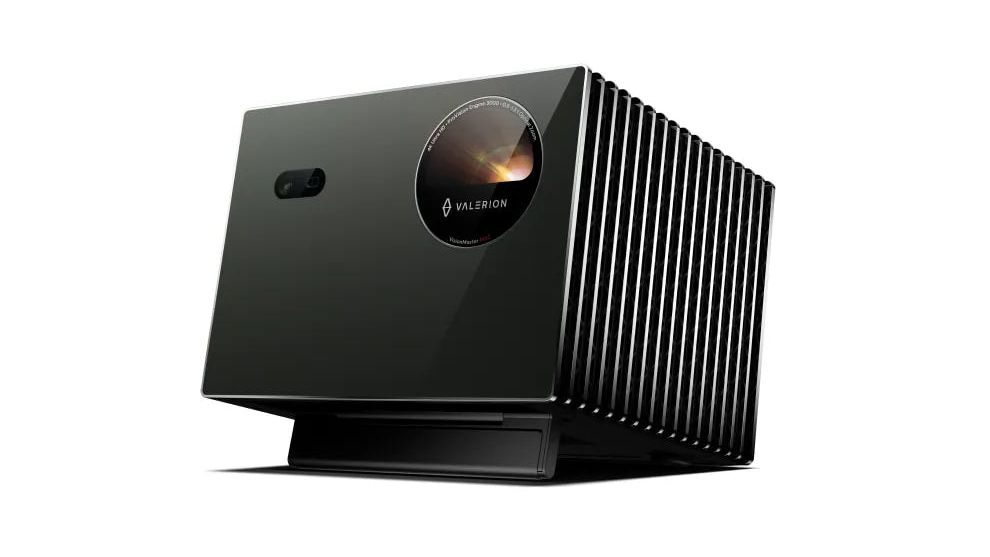
- Brand
-
Valerion
- Native Resolution
-
4K
- Projection Technology
-
DLP with an RGB Triple Laser light source
Valerion VisionMaster Pro 2 is a premium projector offering that boasts an RGB Triple Laser light source, HDR10+ visuals, 3,000 ISO Lumen max brightness, and several top-of-the-line features that are not normally expected with $3,000 lifestyle projector.
- Premium build that’s a treat to look at even when off
- Excellent performance for gaming with low input lag
- Impressive brightness and a deep contrast (with Enhanced Black Level mode)
- Minor rainbow effect visible in some bright modes
- Startup time is slower than traditional TVs
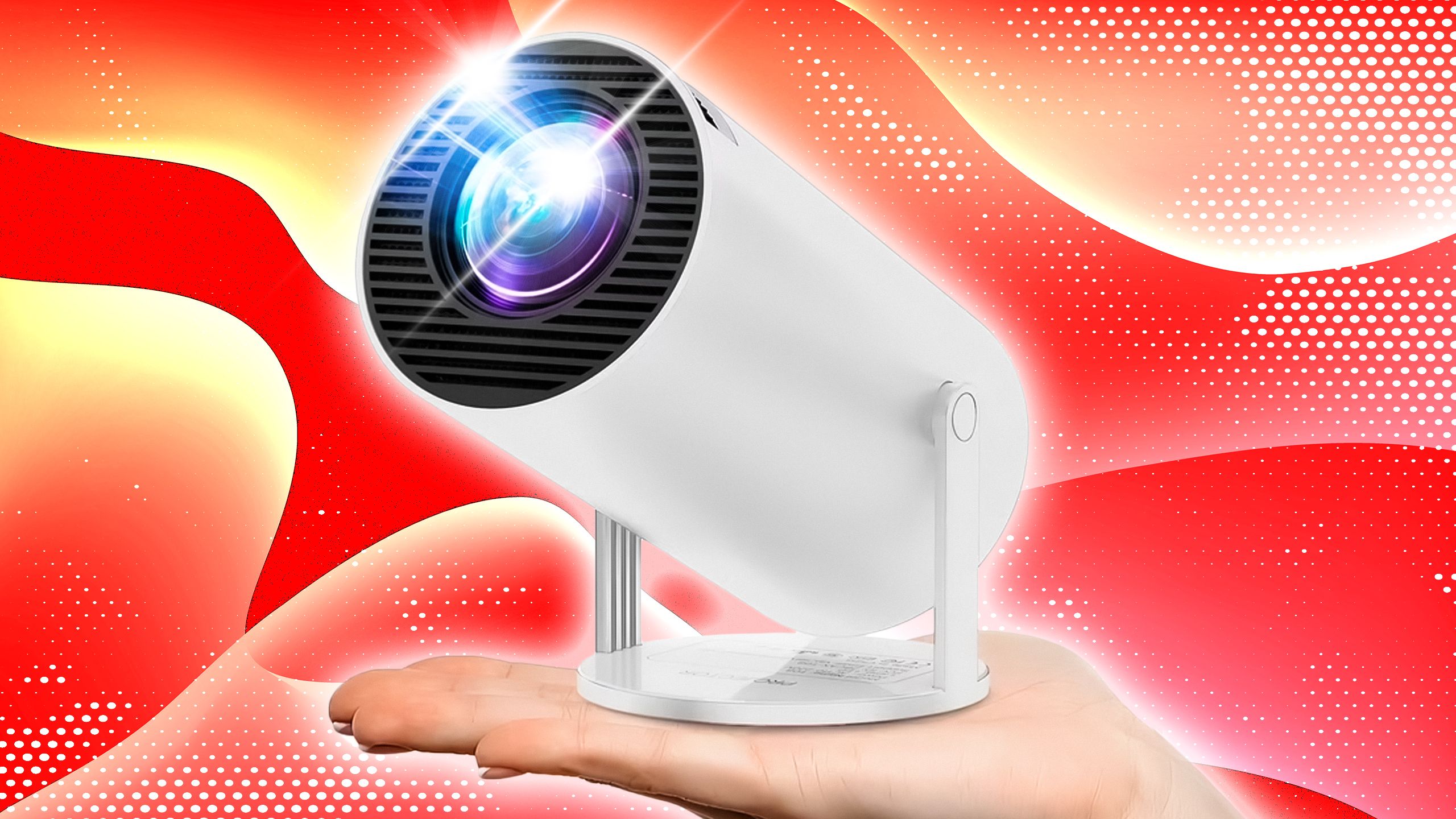
Related
Projectors will eventually overtake smart TVs. Here’s why
A popular alternative to a smart TV offers versatility, size, and convenience.
Price, availability, and specs
Available across the US, the projector series was first announced via a Kickstarter campaign back in October 2024, and it quickly raised over 10 million dollars from backers around the world.
Subsequently, the VisionMaster Pro 2 became widely available early in 2025, bringing access to top-of-the-line projector features like an EBL (Enhanced Black Level) mode, an RGB Triple Laser light source, HDR10+, low input lag for gaming, a 3,000 ISO Lumen max brightness rating, and more.
The projector is accompanied by a higher-end (and pricier) VisionMaster Max with higher peak brightness, a superior contrast ratio, and hardware-related upgrades like vertical lens shift and a dynamic iris. Which one of the two you ultimately get depends solely on your needs and budget.
For this review, I used the Valerion VisionMaster Pro 2 with desktop gimbal stand and a dedicated 120-inch ambient light-rejecting screen, though those accessories aren’t strictly essential to appreciate the projector’s prowess.
On the specs front, the projector relies on the late 2022-released MediaTek quad-core MT9618 that powers several of the projector’s AI-powered features. These include real-time optimizations like AI Scene Recognition, Dark Detail, Super Resolution, and more. I left these off for the purpose of this review.
The chip, paired with 4GB of RAM, offers a mostly speedy experience, with no noticeable lag or slowdown during navigation or app usage in my experience.
The projector also boasts 128GB of internal storage, which is more than sufficient for you to store a vast library of apps, offline content, and all the system files. It runs Android 12, which takes up roughly 20GB of the total storage.
- Brand
-
Valerion
- Native Resolution
-
4K
- Projection Technology
-
DLP with an RGB Triple Laser light source
- Connectivity
-
Wi-Fi 6e, Bluetooth 5.2, Airplay 2, Chromecast, Miracast
- Throw Ratio
-
0.9-1.5:1
- HDR
-
Yes
- OS
-
Google TV (Android 12)
- Audio
-
2x 12W DTS Virtual:X
- Lamp Life
-
25,000+ hours
- Image Size
-
Up to 300-inches
- Ports
-
2x HDMI 2.1, 1 HDMI 2.0 with eARC, 1 USB 3.0, 1 USB 2.0, 1 optical S/PDIF, 1 3.5mm audio jack, 1 ethernet LAN port
- Size
-
10.23-inch × 7.3-inch × 9.2-inch
- Weight
-
15.4lb (7KG)
- RAM
-
4GB
- Storage
-
128GB
What I liked about the Valerion VisionMaster Pro 2
Buckle up
Before getting into the nitty-gritty, I’m going to take a moment to appreciate the manufacturer’s attention to some fine details, evident right from the very first impression.
The device ships in a protective case that also doubles as a convenient carrying case if you intend to take the projector around for the occasional movie night at a friend’s place. The case neatly holds the projector, its remote and the power cable.
Speaking of the remote, it comes with 2 AAA batteries, is backlit, and simply well-designed with quick access to YouTube, Netflix, Prime Video, and Disney. Other quick access buttons include one for Google Assistant/voice control, input, a shortcut to the aforementioned AI tools, autofocus, and more.
The remote is generally very responsive, barring the arrow keys. In my experience, successfully registering a press on the left/right/up/down arrow keys required precise finger placement directly on the arrow dots. If my finger was even slightly off-center, the remote wouldn’t register the input. I’d normally blame this on muscle memory, especially since my TV’s remote offers much more lenient button press zones. However, after spending over a month with the projector, I still haven’t adjusted to the precise input requirement.
Moving on to the projector itself, it really stands out with its premium electroplated ribbed metal design that’s wrapped around the projector’s body. Reportedly, the metal-plated design is to help the VisionMaster Pro 2 withstand loads of up to 100 kg. Why that is necessary for a projector that’s either going to be ceiling mounted or placed on a tripod? Well, I truly don’t know, but you’ll never find me complaining about extra durability, especially when it adds personality to the device in question.
Without exaggerating, the VisionMaster Pro 2 is one of my favorite pieces of tech to admire even when turned off.
Most of the projectors I’ve used in the past have featured a plasticky outer design, so the VisionMaster Pro 2 is clearly a breath of fresh air that can seamlessly integrate into my living room without sticking out like a sore thumb.
Whether this prompts the industry to adopt more aesthetically pleasing designs remains to be seen.
Setting up the VisionMaster Pro 2 is a seamless experience. Technically, you don’t really need a dedicated tripod or ceiling mount to get running. The device has a sturdy leg that can be retracted, allowing you to achieve the perfect angle for your wall/screen in minutes. I personally used the projector with a desktop gimbal stand, though the built-in leg provides more than enough stability for most non-mounted setups.
Power cable goes in the back, with its port, alongside two HDMI 2.1, one HDMI 2.0 with eARC, one USB 3.0, one USB 2.0, one optical S/PDIF, one 3.5mm audio jack, and one ethernet LAN port recessed behind a fold-down flap. The flap itself features a soft-close/soft-open hinge, ensuring it lowers gently and silently. This, again, is a minor touch that adds to the projector’s overall premium feel and attention to detail.
All of that, though, comes second to the projector’s performance – and that is one area where the VisionMaster Pro 2 does not disappoint.
The projector’s sensors work in tandem to give you a calibrated start from the get-go, and in my experience, its auto-keystone and autofocus capabilities gave me a sharp and perfectly aligned image every time.
If you own a dedicated projector screen, your experience should be even smoother. The VisionMaster Pro 2 has auto-screen detection, which essentially adjusts the keystone and focus to conform to your screen’s borders. For me, this worked as intended about 9/10 times, and when it didn’t, I just had to make very minor manual focus adjustments to get the perfect image quality. Theoretically, this should work with up to a 300-inch screen.
Speaking of automatic calibrations, the projector also boasts an auto content detection feature, which will automatically switch picture modes to HDR when it detects compatible content, essentially ensuring that you’re always getting the best picture quality without you having to manually dive into menus.
The projector is Active 3D compatible too, which means regular DLP glasses from Amazon should work for an immersive 3D experience with compatible content. I did not get a chance to test this out. However, what I was able to put to the test is the VisionMaster Pro 2’s brightness claim.
With the Laser Luminance Level set to max, and a 9-point grid pattern projected on the screen, I was able to verify Valerion’s brightness claims. For reference, the VisionMaster Pro 2 is rated at 3,000 ISO lumens. In my testing, the projector was only able to achieve that value (and higher) with its ‘Brightness Enhancer’ set to high. However, I wouldn’t recommend using the projector in this mode, as it introduces a green bias that’s unpleasant to look at for extended durations.
Standard and Vivid modes easily reached impressive 2,400-2,500 ISO lumen levels with Brightness Enhancer set to off. Again, these modes were still too overwhelming for my eyes, especially for extended viewing sessions in a dark room. That too with a light rejecting screen. Theater mode, on the other hand, emerged as the sweet spot. It was the most pleasant to look at, clocking in at roughly 2,220 ISO lumens (for non-HDR content) with Brightness Enhancer turned off.
Your results may vary depending on your calibrations. However, I can confidently say that the VisionMaster Pro 2’s light output is bright enough to easily fill up screens bigger than my 120-inch setup, with even daytime ambient light not posing a threat at all. The image below was taken during the daytime with blinds partially open.
It’s worth noting the ISO standard typically follows stricter measuring requirements when compared to the ANSI standard. My light meter tests were conducted in a room with blackout blinds and no other artificial lights. The walls in the projector room, however, are off-white, which could have introduced a minute amount of reflection to influence the readings.
While brightness is key to any good projector, contrast is what truly makes the image pop. According to Valerion, the VisionMaster Pro 2 boasts a 15,000:1 contrast ratio. This essentially means that the brightest white the projector can display will be roughly 15,000 times brighter than the darkest black it can display. It’s worth noting, though, that this isn’t the projector’s native contrast ratio.
The projector boasts an already impressive 4,000:1 native contrast ratio, with the aforementioned EBL mode required to dynamically deepen black levels to achieve the 15,000:1 figure. Essentially laser dimming, EBL dynamically adjusts the laser power when it detects a predominantly dark scene, all while preventing bright elements from looking washed by rapidly adjusting the power. This is unlike local dimming on TVs, where individual zones can be dimmed or brightened depending on the scene.
I normally only utilized EBL at night — on movie nights, to be specific. It also presents a drastic color shift, so I normally had to enable the mode roughly 15 minutes before starting the movie, just to give my eyes enough time to adjust to the changed color temperature. The pros, however, outweigh the cons, especially when paired with a light-rejecting screen.
I wouldn’t go as far as to compare the contrast level to high-end OLED TVs with local dimming, but I can confidently say that astronomy videos (that I often fall asleep to) haven’t looked this truly deep on the big screen, with the darks looking truly vast, and bright objects likes galaxies and colorful nebulae standing out and shining bright.
Okay, so, great design? Check. Ample brightness? Check. Impressive contrast ratio? Check. But what about when the controllers come out? Although not advertised as a ‘gaming projector,’ the VisionMaster Pro 2 can easily hold its own. It achieves a 4ms input lag at 1080p@240Hz. 4K gaming is capped at 60Hz with a slightly higher 15ms input lag. Let’s be honest here – you’re not playing precision-based competitive shooters like Counter Strike or Valorant on 4K. And if you are about that life, you would most definitely prefer your gaming monitor over a projector screen.
For most other titles, the 15ms delay wasn’t really noticeable at all, making the VisionMaster Pro 2 a reliable choice for an immersive big-screen gaming experience. I platinum-ed FromSoftware’s new Elden Ring Nightreign in its entirety on the projector, and it was a truly seamless, responsive, and visually stunning experience with no hiccups.
HDR gaming is supported for compatible titles, and the same goes for the EBL mode (I mostly kept it disabled while gaming). Additionally, the projector automatically goes into its Auto Low Latency Mode (ALLM) when it detects that you’ve plugged in and turned on a connected device like a PlayStation, saving you the hassle of diving into menus to manually switch modes.
What I didn’t like about the Valerion VisionMaster Pro 2
Seeing red (and green and blue)
There truly isn’t one single thing that breaks the VisionMaster Pro 2, but there are several tiny ones that, in my opinion, could have further polished the experience.
The projector’s brighter modes — Standard and Vivid, for example, suffer from the occasional rainbow effect (RBE), which I primarily observed when quickly navigating through the projector’s menus.
Sensitivity to perceiving the effect differs from person to person, and I’d consider myself not particularly sensitive to it. However, I still noticed the RBE artifacts from time to time. What’s important, though, is that the effect didn’t really seem to kick while viewing content. That is likely because my unit is placed at the optimal distance where I don’t need major keystone corrections, which seems to be making RBE worse for some users.
Using the projector in some of the ‘less-bright’ modes like Theater also seemed to pretty much make the rainbow effect disappear.
Elsewhere, the remote, albeit well-designed, requires precise button input for the arrow keys. This could very well be a ‘me’ issue, but one that could have been avoided with bigger button press zones.
I also noticed that the projector, despite its otherwise speedy performance, often takes a bit longer than traditional TVs to start up. It often takes roughly 10 to 15 seconds for the projector to fully power on and display an image, and although that isn’t a big inconvenience, this hasn’t been an issue on cheaper and less powerful projectors I’ve tested in the past.
Additionally, even after the VisionMaster Pro 2 begins projecting Google TV’s home interface, it takes a few extra seconds to become fully responsive. Again, a quick startup doesn’t necessarily make or break the overall experience, but it certainly is an expectation when you’re shelling out $2,500 to $3,000 on a device.
Should you buy the Valerion VisionMaster Pro 2?
You need to factor in additional costs
The answer to that question truly depends on your needs. Although affordable, considering its premium build quality, performance, and the sheer number of features it offers, that price point is already knocking on the door of some truly high-end TVs.
If the VisionMaster Pro 2 will be your first projector, you also have to factor in additional costs for a decent screen, a projector mount (If you don’t intend to place the device on a table), and potentially even blackout curtains.
If you already have the extras, or have already factored in the additional costs, the VisionMaster Pro 2 is a compelling alternative to traditional TVs. However, you also need to consider whether you need all the VisionMaster Pro 2’s advanced features.
There are several reliable projectors on the market that sit significantly lower than the $3,000 price tag – even ones from Valerion, like the StreamMaster Plus and Plus 2, that don’t necessarily offer all of VisionMaster Pro 2’s top-of-the-line features, but can still provide a great and simple ‘point and view’ experience for many users.
These, however, wouldn’t always offer an image as bright as the VisionMaster Pro 2, nor would they typically feature the same deep contrast. They certainly wouldn’t deliver the exceptionally low input delay the VisionMaster boasts.
Elsewhere, if you plan to make the projector a central attraction in your living or home theater room, there are hardly any other projectors that can match the Valerion offering’s modern aesthetic.
The VisionMaster Pro 2 retails for $3,000, but it is currently discounted by $450, which brings its price down to $2,550.

- Brand
-
Valerion
- Native Resolution
-
4K
- Projection Technology
-
DLP with an RGB Triple Laser light source
Valerion VisionMaster Pro 2 is a premium projector offering that boasts an RGB Triple Laser light source, HDR10+ visuals, 3,000 ISO Lumen max brightness, and several top-of-the-line features that are not normally expected with $3,000 lifestyle projector.





